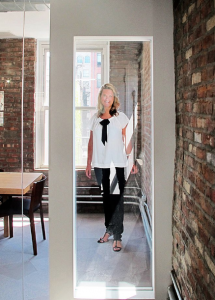How to build great teams
About the author
Our guest authors are what make PR Place such a vibrant hub of information, exploration and learning.

This is an article by Courtney Lukitsch.
Building a great, solid team is at the heart of any business – whether you’re on the agency or client-side.
While the term team is bandied about with tremendous frequency, it’s a rare firm that takes the time to identify the core values that each team member within the organisation, and the team as a whole, possesses.
The idea of agility in our digitally-driven, always-on workplace is explored in a bestselling book, Emotional Agility, written by expert Susan David who effectively posits that internal behaviours manifest in the workplace, holding huge sway and impact within a team.
David identifies four main characteristics to assist individual and group dynamics, offering a compass for strategic planning and team building as we head into the 2017 business year:
- Showing up to face challenges as a team, rather than ignoring problems upfront
- Stepping out to detach from group-think or negative thoughts, to envision a chess board of new possibilities and outcomes
- Walking your way to showcase core values to move the group forward, rather than relegating ideas to abstractions
- Moving on to motivate the team to make a difference individually and collectively – finding a balance between challenge and solution
Silicon Valley veterans, Bill Burnett and Dave Evans, have taken the psychological concept of emotional agility and applied it to the framework of professional and personal development. Based on their creative minds and design backgrounds, this is their Stanford University class turned published book on designing your life. They speak of ways to find your natural workflow by following your individual strengths, skills, and differentiators. Breaking down the system into basic parts, as a designer would, into a series of ideas, tools, and prototyping decisions.
There is a natural team leader that will curate talent within a group based on individual skills, complementary to an agency client and operating outside of the conventional media sphere. PRNews has gone so far as to state that diverse teams might be better prepared for creative challenges, reflecting a focus on skill sets that become artful when a team is operating and is managed effectively. Carefully identifying this balance of achievements is an art rather than a science.
Working in the realm of mentoring and coaching both agency and client-side, at Gotham PR we have observed that team members with degrees in journalism, business, marketing, PR, art, design and architecture are the ideal internal partners to service client-side concerns.
By being inside the mindset of the media and client dually, we are able to communicate, anticipate, strategise, plan, and execute in real time with efficacy. Multi-lingual communication and cultural awareness is also a huge asset for success within the agency world.
Entrepreneur argues that whether a Fortune 500 enterprise or an emerging brand, every business has the potential to tell a great story. Once a great PR team is in place, the agency may begin to help their client also recruit talent and place qualified individuals into new positions to grow awareness and profitability.
In this manner, the PR team and client are woven together through strategic initiatives as trusted partners, aligned along the same goals, values and mission. Listening is perhaps among the most important assets to leverage while building the best team possible given resources of time and attention.
Another five things smart managers know about building teams according to Inc. can be heralded as “PR 101,” and bear repeating:
- Play to individual strengths
- Encourage transparency
- Establish ground rules
- Let them know you have their back
- Provide an incentive
Sage advice from Forbes is the concept of operating as a harmonious team when a CEO is out of the picture. An effective team functions when targets are specified in advance and expectations are managed – both on the client and the agency side. When one expects results without providing leadership, chaos ensues.
Perhaps the most salient aspect of team building is the actual experience of being a valued team member, doing the best work possible and being a part of something larger than the individual. Contributing to the agency or client’s overall mission – and its resulting success stories – is when a team shares in the glory.
There is nothing better than seeing clients’ names in lights, across a major headline, or in national features. The halo effect of being able to position, train, launch, communicate, and promote a new brand only drives success for all team members involved.